Commodity market today on August 1, 2023: WTI oil price continued to increase to 81.8 USD/barrel; Arabica coffee soars
01 August 2023
Crude oil prices rose for the third consecutive session
Information from the Commodity Exchange of Vietnam (MXV), the commodity market today on August 1, 2023, is as follows, crude oil ended the last trading session of July in the green, extending the upward momentum for the third session in a row, and officially brought oil prices to record the largest monthly increase since the beginning of 2022.
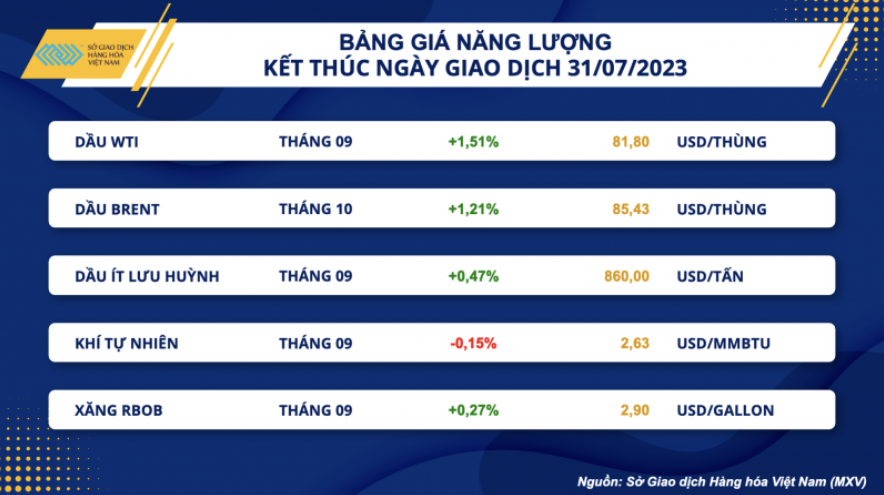
Specifically, WTI oil price closed on July 31 with an increase of 1.51% to 81.8 USD/barrel, Brent oil closed at 85.43 USD/barrel after gaining 1.21%. As such, oil prices hit their highest levels since mid-April after rising nearly 16% in July.
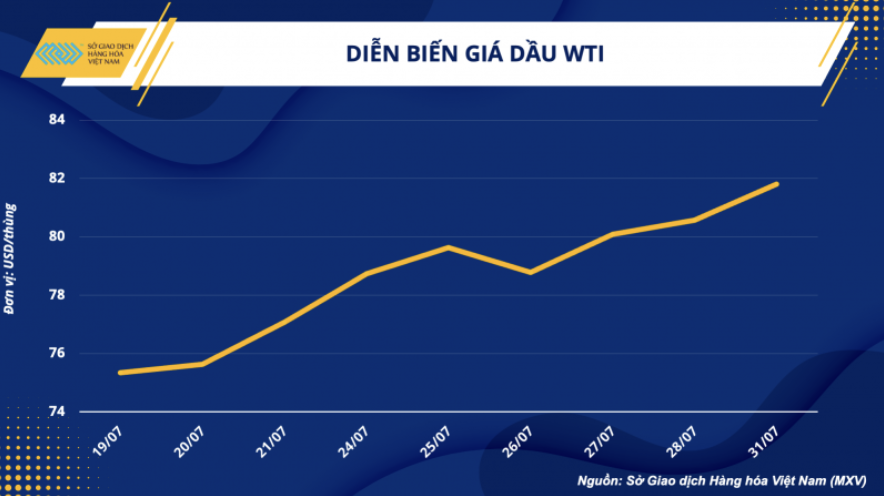
According to a survey from Reuters, Saudi output fell by 860,000 barrels/day in July from the previous month. In particular, data from ship tracking unit Kpler showed that crude oil exports fell by more than 600,000 barrels/day compared to June.
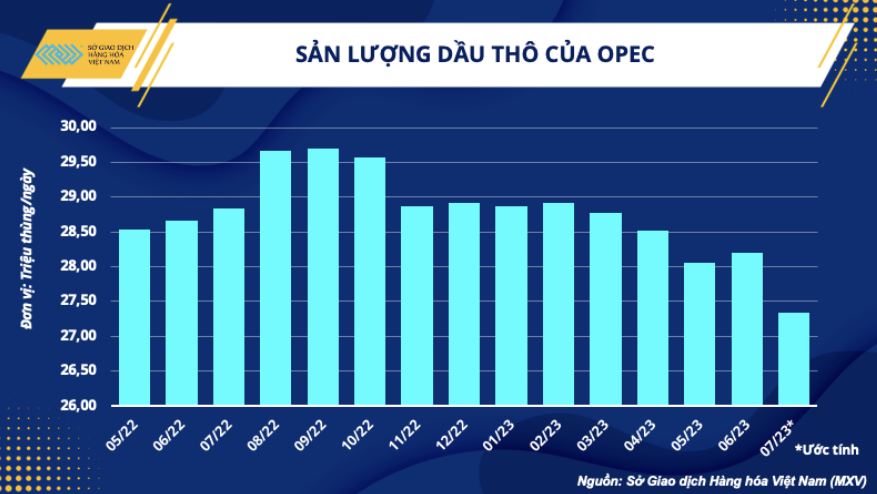
Saudi Arabia’s supply cuts have led to a forecasted reduction of about 840,000 barrels per day in total crude oil production by the Organization of the Petroleum Exporting Countries (OPEC) in July, estimated at 27.34. million b/d, the lowest since September 2021.
That increases the fear of oil supply shortage in the second half of the year, while consumption is expected to be positive when the macroeconomic picture in the US is better and the top importing country China strengthens its measures. economic stimulus measures.
Goldman Sachs bank estimates that global oil demand rose to a record 102.8 million b/d in July and it revised up 2023 demand by around 550,000 b/d based on growth estimates of stronger economies in India and the United States.
The total U.S. crude and petroleum products supply, which represents energy demand, rose to 20.78 million b/d in May, the highest level since August 2019. According to a recent report from the US Energy Information Administration (EIA).
Crude oil production in Texas, which accounts for about 40% of U.S. crude production, rose to a record in May, reaching 5.49 million b/d as U.S. demand surged to a seasonal peak.
Adding to the supply-side risks, crude output in Canada’s energy hub Alberta fell 21% to 2.71 million b/d in June, a seven-year low as traders’ Oil sands production is recovering from the forest fires. The United States is the country that imports the most oil from Canada. This continued to put pressure on the shortage of supply and supported oil prices during the session.

Corn prices fell for 5 consecutive sessions, wheat plunged more than 5%
All 7 agricultural products simultaneously recorded sharp declines. Wheat prices led the way with a drop of nearly 5.5%. Although the Black Sea grain deal has ended, Ukraine’s grain exports are still progressing at a steady pace. This has helped to assuage market concerns about supply disruptions from the Black Sea, while also putting great pressure on wheat prices.
Data from the Ministry of Agriculture of Ukraine shows that the volume of grain exports in July, the first month of the 23/24 crop year, reached 2.16 million tons, higher than 1.61 million tons in the same period last year. Of which, wheat shipments accounted for 758,000 tons, up sharply from 361,000 tons in July 2022.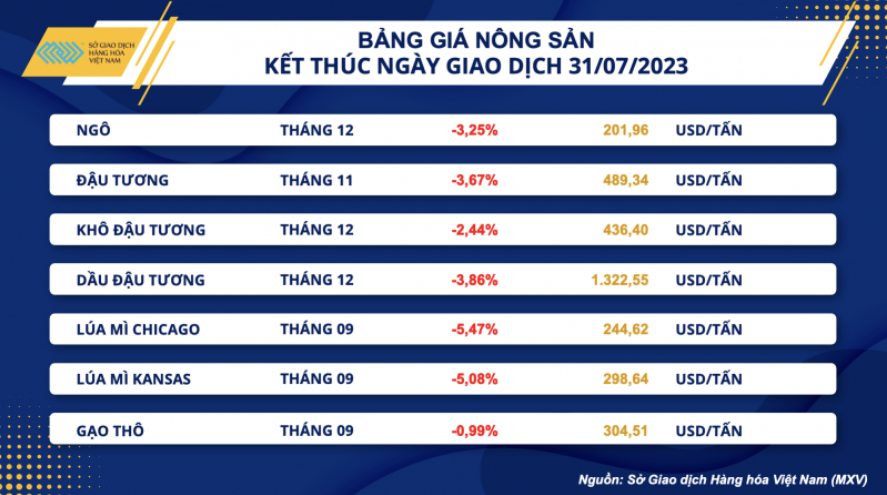 Besides wheat, with the prospect of better weather for the US crop shortly, the price of corn contract in December fell sharply at the opening session of the week. The price drop was maintained throughout yesterday and was only partially reduced by the end of the session thanks to the technical buying power of the market. At the end of the day, corn prices fell sharply by 3.25%, and recorded the 5th consecutive session of weakness.
Besides wheat, with the prospect of better weather for the US crop shortly, the price of corn contract in December fell sharply at the opening session of the week. The price drop was maintained throughout yesterday and was only partially reduced by the end of the session thanks to the technical buying power of the market. At the end of the day, corn prices fell sharply by 3.25%, and recorded the 5th consecutive session of weakness.
Weather forecasts for the previous weekend continue to apply for this week. Cooler temperatures accompanied by an intensification of thunderstorms will occur in early August, helping to improve crop health and potential yield, as maize enters a critical growing period. A better crop outlook in the US was the major pressure on corn prices yesterday.
In the Export Inspections report last night, the US Department of Agriculture (USDA) said the US delivered 522,927 tons of corn in the week of July 21-July 27, up from 329,773 tons a week ago. However, the country’s cumulative delivery of corn crop year 22/23 as of July 27 only reached 34.81 million tons, equivalent to 65.26% of the full-year export plan. The US corn crop year 22/23 is only a few weeks away and it is unlikely that the country will complete its export plan. Therefore, the improvement in corn delivery figures in last night’s Export Inspections report had almost no significant impact on prices.
Arabica coffee soars
In the opposite direction, the green color dominated the price list of industrial raw materials. Notably, the prices of two coffee items both rebounded strongly and led to the group’s gain. Specifically, the price of arabica suddenly reversed to increase strongly by more than 4% yesterday. This is also the strongest increase in the past 1 month for this item. The slowdown in coffee harvest hinders the export of new crop coffee.
Specifically, the progress of Arabica harvest as of July 25, reached 65% of the expected area, lower than 66% in the same period last year and 6% lower than the 5-year average. Moreover, the weather forecast shows that heavy rain may appear in the main coffee-growing area of this country in the next 10 days or more, disrupting the coffee harvest. This may slow down sales of new crop coffee by Brazilian farmers; thereby driving up the price yesterday.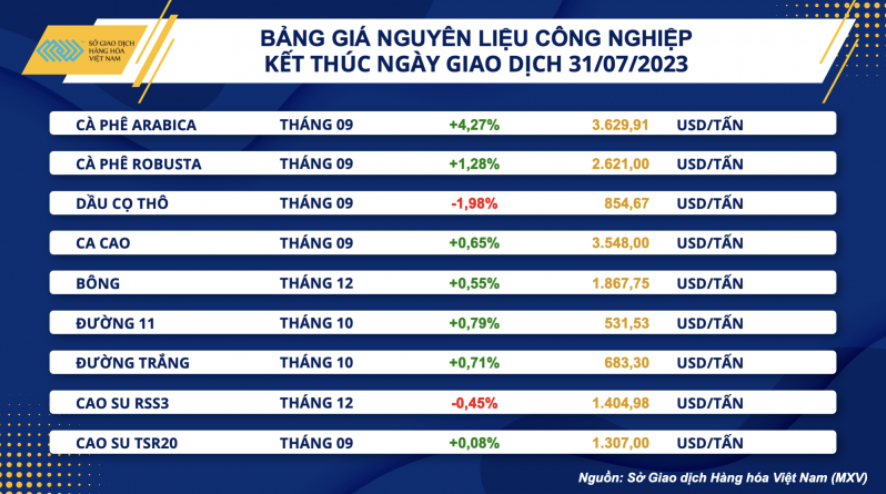 Robusta price also recorded a drop of more than 1% compared to the reference. The market continues to face the fear of supply shortage following the coffee export data of Vietnam and Indonesia. The General Statistics Office of Vietnam estimated that our country’s coffee exports in July continued to weaken over the same period, leading to the cumulative export of the first 7 months of the year at only 1.1 million tons, down 6% compared to the same period last year. in the same period last year.
Robusta price also recorded a drop of more than 1% compared to the reference. The market continues to face the fear of supply shortage following the coffee export data of Vietnam and Indonesia. The General Statistics Office of Vietnam estimated that our country’s coffee exports in July continued to weaken over the same period, leading to the cumulative export of the first 7 months of the year at only 1.1 million tons, down 6% compared to the same period last year. in the same period last year.
At the same time, Indonesia’s June exports of Sumatra Robusta coffee reached 14,858.14 tons, down 14% from 16,980 tons shipped in the same period a year ago, government data showed. On the domestic market, recorded on July 29, the domestic coffee price dropped sharply by 1,500 VND/kg, bringing the transaction price of green coffee beans in the Central Highlands and southern provinces of our country to 65,500 – 66,300 VND/kg, the lowest in nearly 2 weeks.
Metal price list
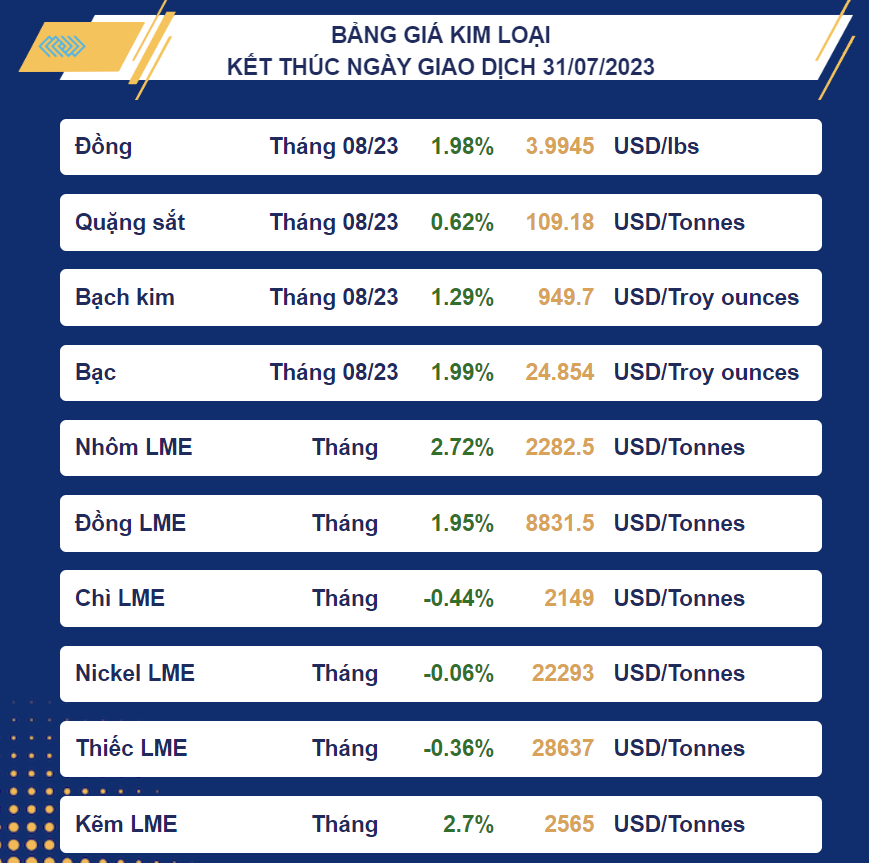
congthuong.vn
